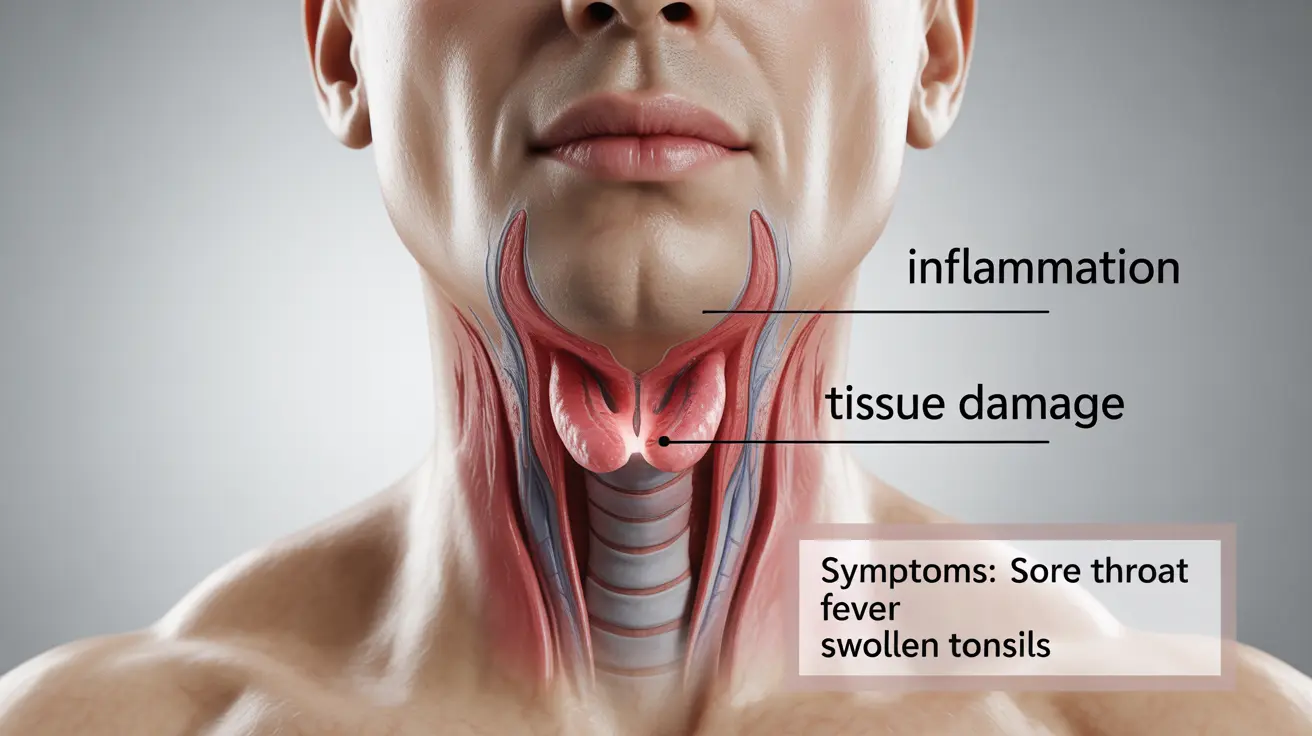When you're feeling under the weather with a sore throat, you might wonder if you're dealing with a simple cold, strep throat, or possibly both conditions at once. While it may seem unlikely, it is actually possible to experience both a cold and strep throat simultaneously, leading to a combination of symptoms that can be particularly uncomfortable and concerning.
Understanding how these conditions can coexist, recognizing their distinct symptoms, and knowing when to seek medical attention is crucial for proper treatment and recovery. Let's explore the relationship between these two common illnesses and what you need to know about managing them.
How Cold and Strep Throat Can Occur Together
While colds are caused by viruses and strep throat by bacteria, these infections can indeed overlap. A cold can weaken your immune system and create conditions that make you more susceptible to bacterial infections like strep throat. This vulnerability can lead to what medical professionals call a secondary infection.
The mucus membranes in your throat can become inflamed and damaged during a cold, creating an environment where strep bacteria can more easily establish themselves and cause infection.
Distinguishing Between Cold and Strep Symptoms
Cold Symptoms
A common cold typically presents with:
- Gradual onset of symptoms
- Runny or stuffy nose
- Mild to moderate sore throat
- Cough
- Fatigue
- Sometimes mild fever
Strep Throat Symptoms
Strep throat usually involves:
- Sudden onset of severe sore throat
- Difficulty swallowing
- High fever (101°F or higher)
- Swollen lymph nodes
- White patches on tonsils
- Absence of cough
Diagnosis and Treatment Approaches
When you have both conditions, proper diagnosis becomes especially important. While colds can be diagnosed based on symptoms alone, strep throat requires a specific test, usually a rapid strep test or throat culture, to confirm the presence of streptococcus bacteria.
Treatment Strategies
The treatment approach differs for each condition:
- Cold: Supportive care, rest, hydration, and over-the-counter medications for symptom relief
- Strep throat: Requires antibiotic treatment, typically penicillin or amoxicillin
- Combined infections: May need both supportive care and antibiotics
When to Seek Medical Care
It's important to consult a healthcare provider if you experience:
- Severe throat pain
- Difficulty breathing or swallowing
- Fever above 101°F
- Symptoms that persist or worsen after 4-5 days
- Swollen lymph nodes that remain tender
Frequently Asked Questions
- Can you have both a cold and strep throat at the same time?
Yes, it is possible to have both a cold and strep throat simultaneously. The viral infection that causes a cold can weaken your immune system, making you more susceptible to bacterial infections like strep throat.
- What are the key differences in symptoms between a cold and strep throat?
Cold symptoms typically include gradual onset, runny nose, cough, and mild sore throat. Strep throat usually presents with sudden severe throat pain, high fever, difficulty swallowing, and white patches on tonsils, typically without cough.
- How is strep throat diagnosed and treated compared to a cold?
Colds are usually diagnosed based on symptoms alone and treated with supportive care. Strep throat requires a specific diagnostic test and is treated with antibiotics.
- What should I do if my sore throat is severe or does not improve after a few days?
If your sore throat is severe or persists beyond 4-5 days, you should seek medical attention. This is especially important if accompanied by high fever, difficulty swallowing, or severely swollen lymph nodes.
- How can having a cold increase the risk of getting strep throat?
A cold can compromise your immune system and damage throat tissues, creating an environment where strep bacteria can more easily establish an infection. The viral infection can weaken your body's natural defenses against bacterial infections.




